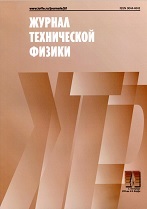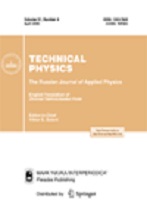|
This article is cited in 1 scientific paper (total in 1 paper)
Theoretical and Mathematical Physics
The numerical simulation of the nanosecond switching of a $p$-SOS diode
N. I. Podolska, A. G. Lyublinsky, I. V. Grekhov
Ioffe Institute, St. Petersburg
Abstract:
Abrupt high-density reverse current interruption has been numerically simulated for switching from forward to reverse bias in a silicon $p^{+}P_{0}n^{+}$ structure ($p$-SOS diode). It has been shown that the current interruption in this structure occurs as a result of the formation of two dynamic domains of a strong electric field in regions in which the free carrier concentration substantially exceeds the concentration of the doping impurity. The first domain is formed in the $n^+$ region at the $n^+P_0$ junction, while the second domain is formed in the $P_0$ region at the interface with the $p^+$ layer. The second domain expands much faster, and this domain mainly determines the current interruption rate. Good agreement is achieved between the simulation results and the experimental data when the actual electric circuit determining the electron–hole plasma pumping in and out is accurately taken into account.
Received: 26.04.2017
Citation:
N. I. Podolska, A. G. Lyublinsky, I. V. Grekhov, “The numerical simulation of the nanosecond switching of a $p$-SOS diode”, Zhurnal Tekhnicheskoi Fiziki, 87:12 (2017), 1790–1793; Tech. Phys., 62:12 (2017), 1787–1790
Linking options:
https://www.mathnet.ru/eng/jtf6041 https://www.mathnet.ru/eng/jtf/v87/i12/p1790
|


| Statistics & downloads: |
| Abstract page: | 56 | | Full-text PDF : | 11 |
|





 Contact us:
Contact us: Terms of Use
Terms of Use
 Registration to the website
Registration to the website Logotypes
Logotypes








 Citation in format
Citation in format 
